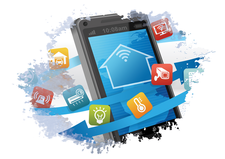Eclipse development tools for the Internet of Things
Gadget Talk

Eclipse IoT is a collection of 26 open source projects with the common goal of building an open development environment for the Internet of Things.
The Eclipse project is a vast and diverse effort to produce a universal open source collection of software development tools. Separate projects within the Eclipse umbrella target specific standards and use cases, creating helpful libraries and software components that (at least theoretically) plug seamlessly into the universal Eclipse development environment.
The recent emergence of the Internet of Things (IoT) has not gone unnoticed within the Eclipse community. IoT programs and protocols connect household appliances, light bulbs, temperature sensors, and motorized devices, requiring a new crop of programming standards and technologies. The Eclipse IoT working group [1] is a collaboration of individuals and organizations dedicated to "development, promotion, and adoption of IoT technology." The group encompasses a wide range of projects that extend the Eclipse vision to a new generation of open source IoT development tools.
Table 1 shows a summary of Eclipse IoT projects. Each project has a different emphasis. For example, the Paho library (see Table 1) handles data exchange via the MQ Telemetry Transport (MQTT), a common messaging protocol for open IoT. All Eclipse Foundation projects are under open source licenses and are therefore available free of charge.
[...]
Buy this article as PDF
(incl. VAT)
Buy Linux Magazine
Subscribe to our Linux Newsletters
Find Linux and Open Source Jobs
Subscribe to our ADMIN Newsletters
Support Our Work
Linux Magazine content is made possible with support from readers like you. Please consider contributing when you’ve found an article to be beneficial.

News
-
Two New Distros Adopt Enlightenment
MX Moksha and AV Linux 25 join ranks with Bodhi Linux and embrace the Enlightenment desktop.
-
Solus Linux 4.8 Removes Python 2
Solus Linux 4.8 has been released with the latest Linux kernel, updated desktops, and a key removal.
-
Zorin OS 18 Hits over a Million Downloads
If you doubt Linux isn't gaining popularity, you only have to look at Zorin OS's download numbers.
-
TUXEDO Computers Scraps Snapdragon X1E-Based Laptop
Due to issues with a Snapdragon CPU, TUXEDO Computers has cancelled its plans to release a laptop based on this elite hardware.
-
Debian Unleashes Debian Libre Live
Debian Libre Live keeps your machine free of proprietary software.
-
Valve Announces Pending Release of Steam Machine
Shout it to the heavens: Steam Machine, powered by Linux, is set to arrive in 2026.
-
Happy Birthday, ADMIN Magazine!
ADMIN is celebrating its 15th anniversary with issue #90.
-
Another Linux Malware Discovered
Russian hackers use Hyper-V to hide malware within Linux virtual machines.
-
TUXEDO Computers Announces a New InfinityBook
TUXEDO Computers is at it again with a new InfinityBook that will meet your professional and gaming needs.
-
SUSE Dives into the Agentic AI Pool
SUSE becomes the first open source company to adopt agentic AI with SUSE Enterprise Linux 16.

